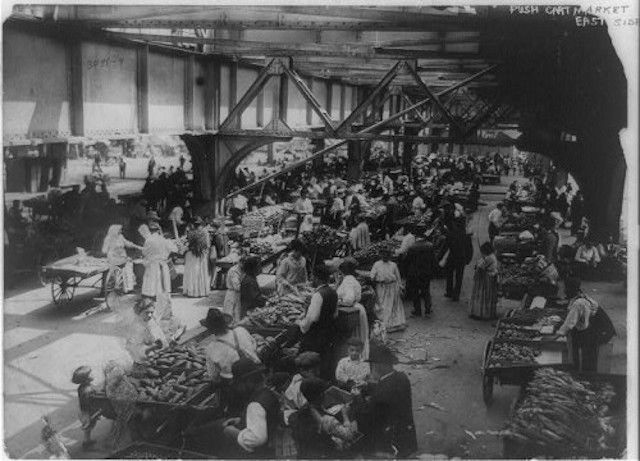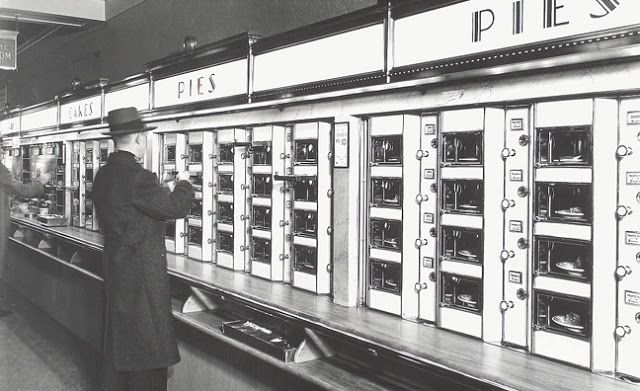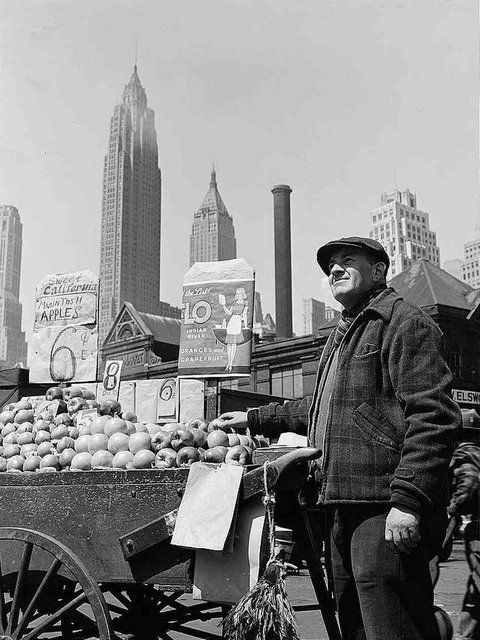Last-Minute NYC Holiday Gift Guide 🎁
We’ve created a holiday gift guide with presents for the intrepid New Yorker that should arrive just in time—


We’ve already examined food trucks in New York City, including some of the legal hurdles vendors must leap over to sell their food. The history of street food and street food vendors in this city, however, extends much farther than the last few years, including the now extinct automat. Inspired by the previous New York Public Library exhibition Lunch Hour, we’re looking at some photos of food vendors past.

Photo from Library of Congress
While now offering a variety of gourmet fare, mobile dining services in New York date back to the 1600s, when oysters and clams (once considered garbage foods) were sold to lower class citizens—in fact, in 1691 the city instituted the first laws regarding serving food from pushcarts. In America, what we might recognize as a food truck or cart were the chuckwagons in Texas which served easy-to-preserve grub to those on the cattle trail. Near the end of the 19th century, “night lunch” wagons sprang up to serve the newly nocturnal workers of New York.
This was also the time when the automat was imported to the East Coast from Berlin, Germany. Essentially a large vending machine for whole meals, customers would walk into the venue, deposit their coins and take the tray of their choice.

Photo by Berenice Abbott from N.Y.P.L., The Miriam and Ira D. Wallach Division of Art, Prints and Photographs
The Horn and Hardat Automat opened in 1912 in Times Square and became the most popular automat in the city. The rise of fast food restaurants spelled the end for the classic automat; the last H & H automat was converted into a Burger King in 1991.
Food carts and wagons gained popularity through the early 20th century. The Women’s Auxiliary of the Temperance Society even opened its own night lunch wagon in Herald Square to try to keep night workers from bars and saloons. The majority of food wagons were in the poorer neighborhoods though, often run by immigrants and offering ethnic specialities like blintzes and sausages.
While numerous and somewhat regulated, the poor neighborhoods and vendors often meant these laws, such as the Thirty Minute Law stating that carts would move every half hour, were rarely enforced. This gave way to the old nicknames of “Roach Coaches” and “Gut Trucks” and the impression of seediness or dirtiness that pervaded until recently.

Photo by Gordon Parks (Library of Congress)
Food carts soon became repurposed Army canteen or ice cream trucks. They became a regular sight near the construction sites and late night haunts of New York and were the go-to choice for city-dwellers in a hurry or short on cash. Unlike the automat, food trucks have remained competitive for decades and now enjoy the chicness and high quality their humble forbears would have never dreamed of.
The author can be reached via Twitter @jimipage26.
Subscribe to our newsletter